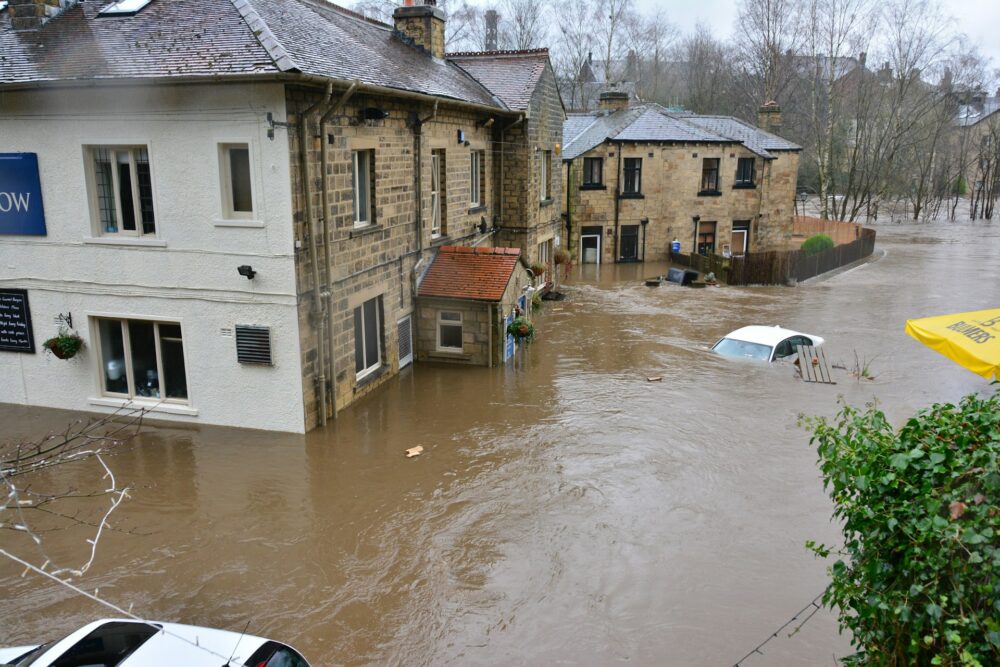A practical guide to scenario analysis for public sector organisations
Climate change presents complex challenges with varying timeframes that can sometimes feel overwhelming for public sector organisations to deal with.
The Government Actuary’s Department (GAD) has published a helpful guide on getting started with climate scenario analysis to help organisations better understand these risks. This guide sets out a structured approach that can transform long-term uncertainty into actionable insights for today's decision-makers.
Why scenario analysis matters
Climate-related risks don't wait for perfect information or complete certainty. From flooding that damages infrastructure to heat waves that affect service delivery, these impacts are already affecting public sector operations.

Scenario analysis offers a way forward, enabling organisations to explore how climate risks might evolve across different plausible futures and make informed decisions despite uncertainty.
The approach aligns with recommendations from the Task Force on Climate-Related Financial Disclosures (TCFD). It is supported by HM Treasury TCFD application guidance specifically designed for government and public sector bodies.
Rather than attempting to predict exactly what will happen, scenario analysis helps organisations understand their vulnerabilities and build resilience across a range of possible outcomes.
Getting started: Seven steps to success
The 7 steps are a key part of GAD's recently published climate scenario analysis guide.
Building on what you already know
Most public sector organisations have already begun thinking about climate risks, perhaps through emergency planning, asset management, or sustainability initiatives. The first step involves surveying this existing work across the organisation. While co-ordinating different teams and departments can be challenging, building on previous efforts will save significant time and resources in the long run.
Establishing your baseline
Understanding current climate-related risks provides essential groundwork for future analysis. This means identifying present-day exposures – such as properties at flood risk, infrastructure vulnerable to extreme weather, or services affected by seasonal variations. Documenting current impacts, including repair costs and insurance premiums, creates a solid foundation for projecting how these might change under different climate scenarios.

Understanding your data needs
Effective scenario analysis requires 3 types of information.
- Hazard data describes potential climate-related events or metrics, from physical risks like extreme temperatures to transition risks such as carbon taxes.
- Exposure data covers the operations, assets, staff, or customers that might be affected by the hazard.
- Vulnerability data examines how susceptible these elements are to climate impacts, considering existing protections and adaptations.
Setting realistic scope
Successful scenario analysis requires careful scoping decisions. Which risks should take priority? The answer depends on what information will be most useful for decision-making, balanced against budget and data constraints. Organisations typically project risks across short, medium, and long-term timeframes, aligned with planning horizons and asset lifetimes.
The scope might focus on specific high-risk areas initially rather than attempting organisation-wide coverage immediately. Quality often trumps quantity in early iterations, with the understanding that the process can expand over time.
Analysing climate risks
With scope defined and data requirements understood, organisations can begin assessing risks across different climate scenarios. This involves using available global scenarios that describe climate change and transition to a low-carbon economy. This is often supplemented with sector-specific or local information.

The analysis examines how exposed and vulnerable the organisation is to future climate hazards, translating this into potential financial impacts. Multiple models may be needed, alongside qualitative assessments, with clear documentation of assumptions and limitations throughout.
Evaluation and disclosure
Climate scenario analysis isn't a purely technical exercise – it's fundamentally about supporting governance and decision-making. Evaluation involves working with decision-makers to understand what the analysis reveals about organisational resilience and where improvements might be needed.
Disclosure provides a record of this ongoing analysis, demonstrating how climate risks are being identified, assessed, and managed. This transparency supports accountability and continuous improvement.
Continuous improvement
Perhaps the most important principle is that scenario analysis is an iterative process. Each round of analysis reveals areas for improvement, whether through better data, refined models, or expanded scope. The key is not to let the prospect of future improvements prevent getting started – perfect analysis isn't the goal, but progressively better understanding is.
Making it work in practice
Climate scenario analysis might seem daunting, but it's designed to be practical and decision-focused. Organisations can start small, build gradually, and improve over time. External support is available where internal capabilities need supplementing, from quality assurance to specialist technical input.
The ultimate goal isn't to predict the future with certainty – it's to understand risks well enough to make informed decisions about resilience, adaptation, and strategic planning. In a world where climate impacts are already evident and set to intensify, scenario analysis provides a structured way to navigate uncertainty and build organisational resilience.
For public sector organisations serving communities across the country, this approach offers a path towards more climate-resilient services and operations. By understanding how climate risks might evolve, organisations can better protect the assets, operations, and people they serve while fulfilling their responsibilities in an uncertain but changing world.
For details of the services which we offer and how GAD can help support your organisation’s climate scenario analysis and TCFD journey, email: climate.change@gad.gov.uk.
Disclaimer
The views expressed are the author’s own and the opinions in this blog post are not intended to provide specific advice. For our full disclaimer, please see the About this blog page.